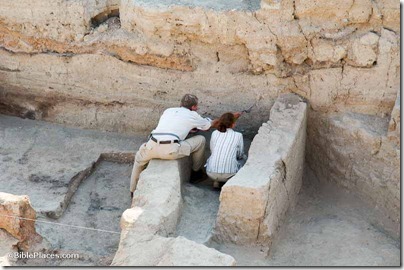It’s May 1, not April 1, but it might as well be with an article entitled “The Real Indiana Jones” that includes an interview with me. Originally published in the excellent Insight’s Archaeology Handbook, the interviews with Bryant Wood and me are now online. Here’s a snippet:
What can archaeology prove or teach us about the Bible? What are its limitations?
BW: Archaeological findings have revolutionized our understanding of the Bible. Through the discoveries of archaeology, we have ancient texts that help us better understand the original languages of the Bible as well as the world of the Bible. The people, places, history, religion, and material culture of the Bible are much better understood as a result of archaeological finds. Many finds are limited in that they are “silent,” and have to be interpreted. This leads to a variety of understandings by various scholars.
TB: Archaeology illuminates the world of the Bible. The Bible was written to a contemporary audience, who didn’t need an explanation of what a house looked like, how a city gate functioned, or what types of tombs people were buried in. Its original readers knew all of this and much more. But today we live in a different world and culture, and archaeology helps to bridge the gap so that we can more properly understand the context in which the Bible was written. Archaeology cannot prove the Bible as a whole, but it can support and confirm the Bible’s records of events. Some people today think that the Bible was a myth written hundreds of years after the events it purports to describe, but archaeological evidence reveals the names of people and places that confirm that the Scriptures were written by first-hand witnesses. Archaeology cannot prove many aspects of the text, such as the faith of the people or the supernatural work of God. Furthermore, archaeology has a significant weakness: All discoveries are subject to a human interpreter, who is fallible. Many archaeological discoveries have been misinterpreted, both by those who believe the Scriptures and by those who deny them.
This is the nature of the discipline of archaeology, and believers should not place too much confidence in the discoveries of archaeology per se because of the ambiguity involved in much of the evidence.
The full article is here. Now where’s my bullwhip? ![]()
